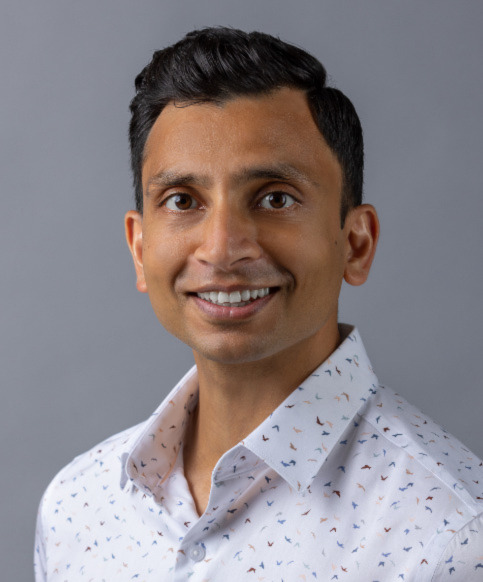by Salman Ahmed
Edinburgh Partners’ Chief Executive Sandy Nairn visited Vancouver and Toronto last week to provide an update to our clients on the Steadyhand Global Equity Fund. Below is a review of some of the topics he discussed.
Firm update
The partners at Edinburgh Partners (EP) have decided to sell the company to Franklin Templeton Investments. Though it will have a new parent, EP will operate independently. Its investing and non-investing functions will not be merged into the larger organization. Sandy will become chair of Templeton Global Equity Group within Franklin Templeton, but will continue with his investing responsibilities at EP and on our Global Equity Fund.
10 years after the crisis
Financial institutions, particularly banks, have come a long way since the financial crisis. Global regulations have made it more difficult for banks to take excessive risks and bank balance sheets are much stronger than they were in the mid-2000s. Investors are also more carefully scrutinizing the risks banks take. Overall, institutions in Europe and the U.S., not just in Canada, are in a better position. It has, however, taken some time for financial companies to get to this position, and even longer for investors to get over the scars left by the 2007-2008 credit crisis.
European recovery
EP started taking a closer look at Europe when investors were writing off the region three to four years ago – it’s the team’s contrarian nature. Despite there being some areas of concern, the team felt there were lots of positive signs. EP did expect the recovery to be faster than it was, but it now seems to have arrived as economic indicators across the region continue improving.
Investors are taking notice and many European holdings have risen as a result. For example, the sentiment around Commerzbank changed once the European economic numbers perked up. The stock was up 70% in 2017.
U.S. stocks
Our fund holds 10% in U.S.-listed companies, far less than most other global equity funds. As a reference, U.S. stocks make up 60% of the MSCI World Index, a proxy for global stocks. EP’s focus on valuations is currently keeping them away from most U.S. companies. Investors flocked to U.S. stocks when the country was showing stronger signs of recovery after the credit crisis. Some of this was warranted, but now U.S. companies are far more expensive than their global peers (in technical terms, U.S. stock valuations are two standard deviations higher than their long-term average).
EP also doesn’t pay much attention to a company’s domicile, which is often driven by tax considerations. Instead, it prefers to look at where companies generate their revenues. On this measure, 20% of the Global Fund's holdings' revenues come from North America, 32% from Europe, 30% from Asia, 13% from Japan, and 5% from South America.
Emerging markets
Our fund’s largest exposure, by revenue generation, is to emerging markets. In economic terms, many of these markets have now ‘emerged’ and investors would be remiss to ignore them. Some of our holdings include banks (Bank Mandiri, Bangkok Bank, Credicorp) and consumer-oriented companies (Shanghai Fosun).
Technology in Japan
The Global Fund doesn’t currently hold big technology companies like Facebook or Amazon on account of them being too expensive, but the team does a lot of research to understand how advances are changing industries.
EP has uncovered companies in Japan that are set to benefit from innovation. Investors outside of Japan likely don’t appreciate the leadership position some of these companies have. For example, long-time holding Panasonic is viewed as a consumer electronics company for its TVs, but many people don’t realize it’s a world leader in battery technology. It has partnered up with Tesla and supplies batteries for Tesla’s cars. Another holding, Alps Electric, builds components used for virtual reality devices, autonomous driving, and workplace automation.
Bitcoin
EP has done some research on cryptocurrencies. Sandy believes there are benefits, but that it is more likely to become mainstream if a central bank controls it. The real potential, however, is in the distributed ledger technology on which cryptocurrencies operate, more commonly known as blockchain. It is early to say how blockchain can be practically implemented, but it shows promise.
Current positioning
Sandy’s team has been able to find opportunities, even as global equity markets have risen and look fairly priced or expensive. EP’s long-term time horizon means it can look at companies that are experiencing short-term troubles. Recently, the allocation to pharmaceutical companies has increased. These companies produce lots of cash and trade at reasonable valuations with attractive dividend yields. Politicians may pressure them to lower U.S. drug prices, but the stocks already reflect this risk.
The fund’s ability to invest anywhere also gives EP a chance to look where others aren’t. Currently, the team is finding interesting ideas in mid-sized Japanese companies and emerging market stocks.
We're not a bank.
Which means we don't have to communicate like one (phew!). Sign up for our blog to get the straight goods on investing.

